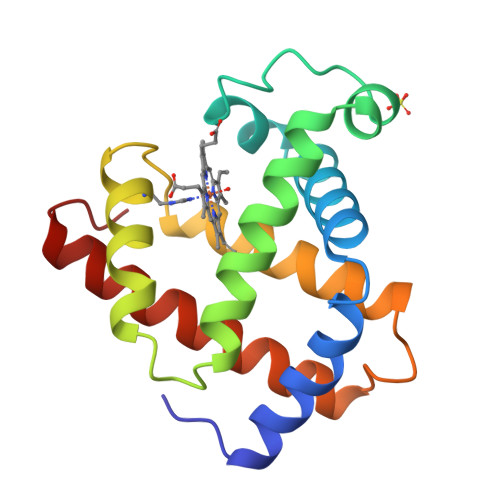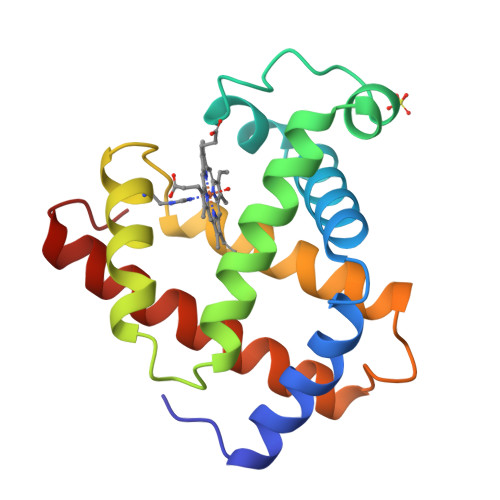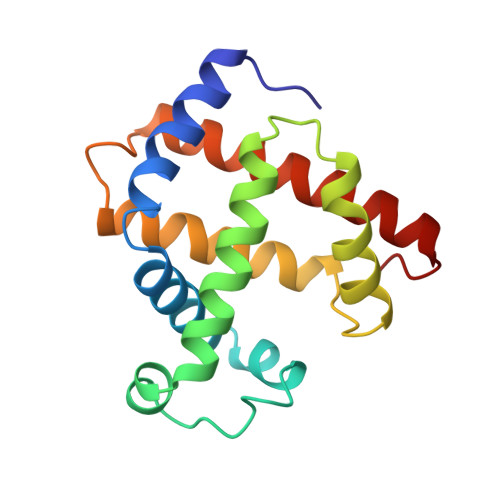Effects of the location of distal histidine in the reaction of myoglobin with hydrogen peroxide.
Matsui, T., Ozaki, S., Liong, E., Phillips Jr., G.N., Watanabe, Y.(1999) J Biological Chem 274: 2838-2844
- PubMed: 9915818
- DOI: https://doi.org/10.1074/jbc.274.5.2838
- Primary Citation of Related Structures:
1OFJ, 1OFK - PubMed Abstract:
To clarify how the location of distal histidine affects the activation process of H2O2 by heme proteins, we have characterized reactions with H2O2 for the L29H/H64L and F43H/H64L mutants of sperm whale myoglobin (Mb), designed to locate the histidine farther from the heme iron. Whereas the L29H/H64L double substitution retarded the reaction with H2O2, an 11-fold rate increase versus wild-type Mb was observed for the F43H/H64L mutant. The Vmax values for 1-electron oxidations by the myoglobins correlate well with the varied reactivities with H2O2. The functions of the distal histidine as a general acid-base catalyst were examined based on the reactions with cumene hydroperoxide and cyanide, and only the histidine in F43H/H64L Mb was suggested to facilitate heterolysis of the peroxide bond. The x-ray crystal structures of the mutants confirmed that the distal histidines in F43H/H64L Mb and peroxidase are similar in distance from the heme iron, whereas the distal histidine in L29H/H64L Mb is located too far to enhance heterolysis. Our results indicate that the proper positioning of the distal histidine is essential for the activation of H2O2 by heme enzymes.
Organizational Affiliation:
Institute for Molecular Science, Graduate University for Advanced Studies, Myodaiji, Okazaki 444, Japan.


















